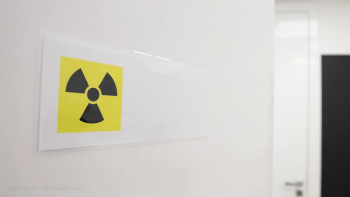
Looking to Transform Myelofibrosis Treatment: Positive Results From the TRANSFORM-1 Trial
A combination of navitoclax and Jakafi (ruxolitinib) achieved spleen volume reduction, although adverse events led to some dose modifications and treatment interruptions.
Myelofibrosis is a rare bone marrow disorder that affects thousands of people worldwide. For years, treatment options have been limited, with few options available to improve the quality of life for those suffering from this debilitating disease. But results from the TRANSFORM-1 clinical trial are offering hope in the form of a new combination treatment.
During a presentation at the American Society of Hematology annual meeting in December 2023,
JAK inhibitors have shown efficacy in reducing symptoms and spleen volume in people with myelofibrosis. The COMFORT-1 and -2 studies established JAK inhibitor monotherapy as the standard of care. Additionally, the phase 2 REFINE trial demonstrated the antitumor activity of navitoclax in myelofibrosis patients.
Myelofibrosis is a life-altering condition characterized by the scarring and fibrosis of the bone marrow, leading to a variety of symptoms including fatigue, enlarged spleen, anemia and severe pain. Traditional treatments such as chemotherapy and stem cell transplantation have shown limited efficacy, leaving patients and healthcare providers searching for alternative options.
The ongoing TRANSFORM-1 trial aims to evaluate the safety and efficacy of combining navitoclax, an investigational B-cell lymphoma 2 protein (Bcl-2) inhibitor with Jakafki. This novel combination therapy holds great promise in improving outcomes for patients with myelofibrosis, potentially transforming the landscape of treatment options available.
TRANSFORM-1 is a randomized, double-blind, placebo-controlled, multicenter, international phase 3 trial of navitoclax in combination with Jakafki compared with Jakafi plus placebo in patients with untreated myelofibrosis.
The trial enrolled JAK inhibitor-naïve adults with intermediate-2 or high-risk myelofibrosis. The patients were randomized to receive either navitoclax plus Jakafi or placebo plus ruxolitinib. The primary endpoint was spleen volume reduction at week 24. One of the goals of therapy is an improvement of splenomegaly. As the disease progresses from bone marrow failure and spleen enlargement, controlling extramedullary hematopoiesis and preventing subsequent complications like portal hypertension is required. Evaluating spleen response to therapy is part of the overall required clinical criteria from the
The results showed that 63.2% of patients in the combination arm achieved spleen volume reduction compared to 31.5% in control arm. The spleen volume reduction rate at any time was higher in the combination arm compared with solo treatment with Jakafi).
Additional data presented at the American Society of Hematology meeting included evaluation of the total symptom score.Total symptom score included assessments of inactivity, weight loss, bone pain, fever, pruritis, night sweats and symptomatic splenomegaly.At 24 weeks, 45.9% of patients in the combination arm reported an improvement of 50% or more in their symptoms compared to just 5.3% in the control arm.
The incidence of grade 3 or greater adverse events was higher in the combination arm (85%) compared to the control arm (70%). The most common adverse events were thrombocytopenia, anemia, diarrhea, and neutropenia. Serious adverse events were experienced by 26% of patients with combination therapy and 32% in the control group.
The findings of this study suggest that the combination of navitoclax and ruxolitinib leads to a significantly higher spleen volume reduction rate compared to Jakafi plus placebo in JAK inhibitor-naïve myelofibrosis patients. However, the incidence of grade 3 or greater adverse events in the combination arm necessitated dose modifications and treatment interruptions. Thrombocytopenia and anemia were the most common adverse events but were manageable with dose adjustment.
“By adding a second drug to an approved therapy, we were able to improve spleen volume reduction compared to the current standard of care.This is an important measurement of the clinical benefits of this novel drug combination because treatments can be less effective when the spleen remains enlarged…If we can treat myelofibrosis earlier on in the disease course, we may have an opportunity to impact overall disease modification, improve patient outcomes and reduce symptom burden” Pemmaraju said in
Newsletter
Get the latest industry news, event updates, and more from Managed healthcare Executive.





















































